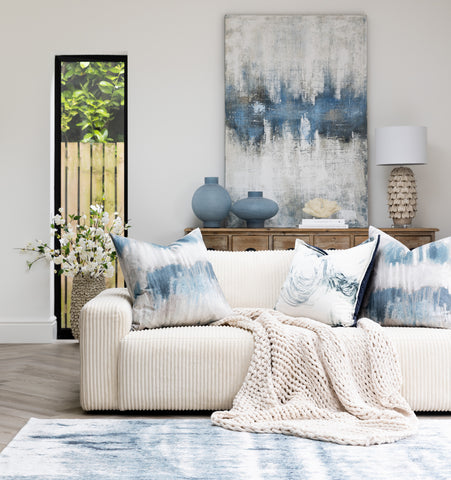
How the pandemic has changed interior design
While there was increased discussion during the pandemic surrounding the revitalising power of going outside the four walls of our homes, it was also a time we started to appreciate our interiors. It seems coming out of the pandemic everyone was having their home renovated, fixed up with new kitchens and bathrooms and making what was once old new. But for interior designers, there have been other factors to consider when styling clients' homes post-pandemic.

- The need for office spaces
During the pandemic when, for some, ‘work’ moved to the home setting; a functional office space became a sudden necessity for what perhaps before was a luxury. Whether working from home and needing a work-life separation of a corridor, or needing some alone space when not at work, the study became suddenly a room that needed to function and motivate. It needed be productive, therefore not distracting, but not so simple it verged on boring, that you couldn’t wait to escape.

- Background matters
Never before did we get an inside peek into someone’s home so easily. The little camera exposing your interior space. Therefore, in creating study spaces, considering the direction of light and what fell behind the desk grew even more important. Now designers must also consider how your space is perceived through a camera lens, as well as by guests walking through your front door.

- Windows
In fact, the necessity and demand for light in our interior spaces became even more emphasised. When one can only peer out of a window, it makes the wish to have more spaces to look at even more emphasised. The use of natural light in our living spaces is known not only to be good for wellbeing, but adds a freshness to your living space that cannot be traded. Access to fresh air makes your interior space so much more inviting and now if not already, a priority.

- Function and form
While a stylish desk or side table with ornaments were preferred, our office habits and confinement to one space meant that our home also needed function. Design has been influenced by this and now considerations when designing furniture focusses function and form, as opposed to its cosmetic appeal alone.

- Appreciation of the space
We started to appreciate our space and interior designers have never been busier. However, we also grew to understand how our space needed to function.
Post pandemic and into the future, we can see that interior design has not gone without change during this time. With increased importance placed on the architecture of the building to provide the best light, air and space, and our purchases being impacted by their placement behind and on our surfaces, we have grown to appreciate and understand interiors all the more.
Francesca Lea

Leave a comment